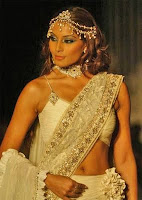
Interesting & Fun Facts about Qutab Minar
Qutab Minar is the tallest brick minaret in the world.
The Qutub Minar and its adjoining monuments are all listed as UNESCO World Heritage Site.
The diameter of Qutub Minar is 14.32 m at the base and 2.75 m on the top.
The height of Qutub Minar is 72.5 m.
There are 379 stairs inside the tower, which lead to the top.
The foundation of the tower was laid down by Qutubu’d - Din Aibak in 1199 AD.
The purpose behind the construction of Minar was for the use of mu'azzin (crier) to give calls for prayer.
The first storey was completed during the reign of Aibak.
Many historians believe that the Qutub Minar was named after the first Turkish sultan, Qutb-ud-din Aibak. But there is a different view also. Other historians contend that it was named in honour of the Sufi Saint Qutbuddin Bakhtiar Kaki
The next three stories were added by Shamsu'd-Din Iltutmish, the son - in - law of Qutubu’d - Din Aibak.
The fifth and the last storey were constructed by Firuz Shah Tughlaq.
All the stories are surrounded by protruding balconies, encircling the tower.
The Minar contains numerous inscriptions in Arabic and Nagari characters, which narrate its history.
As per the inscriptions on its surface, it was repaired by Firuz Shah Tughlaq and Sikandar Lodi.
The Minar was also repaired and restored by Major. R. Smith in 1829.
According to the Archeological Survey of India, the site at which Qutab Minar is located was once occupied by 27 Hindu and Jain temples.
Qutab Minar is made up of red and buff sandstone, containing intricate carvings and verses from the Holy Quran.











